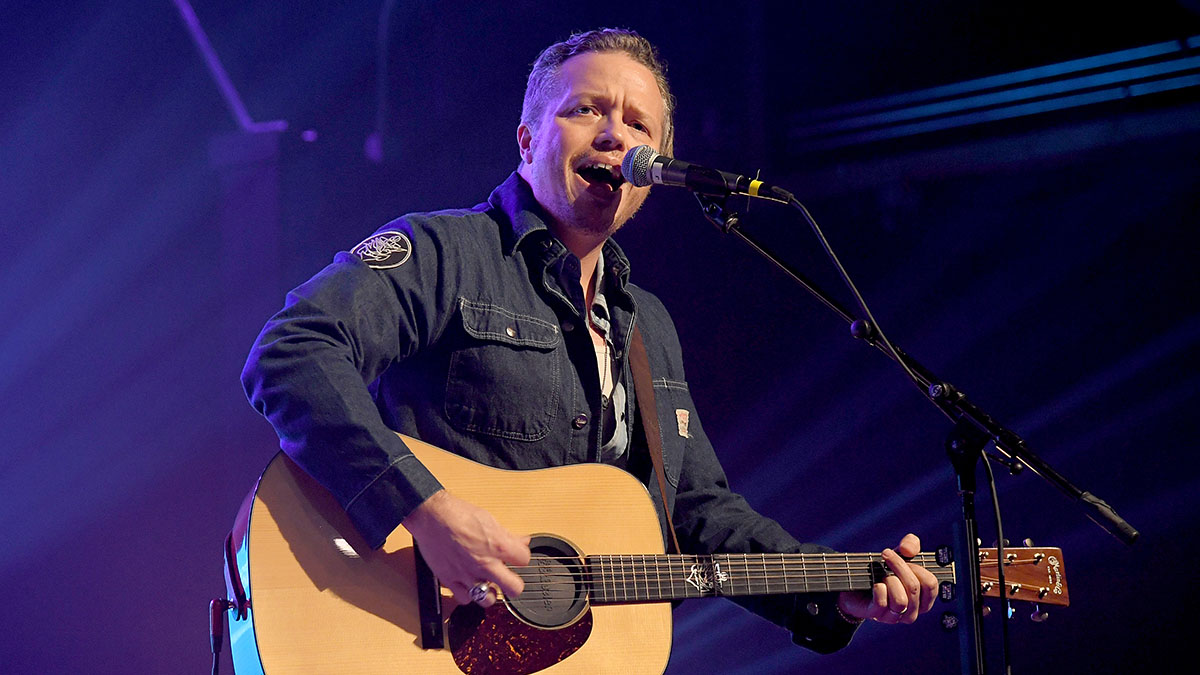
Americana superstar Jason Isbell is the quintessential guitarist’s guitarist. Equally at home on both electric and acoustic guitar he is a master fingerpicker, riff writer and lead player. He’s a vintage guitar connoisseur, too, and famously possesses ‘Redeye’, the legendary Les Paul once owned by Lynyrd Skynrd guitarist Ed King.
A winner of four Grammy awards, Isbell first found success as a member of the Drive By Truckers before going on to work as a solo artist and alongside his band, The 400 Unit who also feature guitar ace Sadler Vader.
Growing up in rural Alabama, Isbell took up music at the age of six starting with mandolin, trumpet and French horn before moving to guitar. His first musical experiences were in bluegrass and country and by the time he was 21 had his first record deal with FAME Studios of Alabama. He was a member of the Drive-By Truckers from 2001 to 2007 when he started the solo career that has led him to fame today.
Isbell cites his Alabama roots as being a major part of who he is as a musician, and indeed the Muscle Shoals soul sound is responsible for shaping many of the musicians who come from the region. Isbell is also a huge fan of singer-songwriters Neil Young, Ben Howard and Bob Dylan. As a guitarist, he is influenced by Chet Atkins, Duane Allman, Jackson Browne and David Lindley among others.
There are many facets to Isbell’s playing and, as is typical of most Americana guitarists, he is equally adept at strumming and fingerpicking.
This piece explores how Isbell constructs songs from simple chord sequences using the guitar as a simultaneous melody and accompaniment tool.
It’s in this approach where you really hear the Chet Atkins influence – Isbell fingers a chord shape, picks an alternating bassline on the sixth and fourth strings and then picks melody lines over the top.
You have to ensure the bassline does not overshadow the melody and vice versa. Try deliberately easing back on the picking hand thumb so the bass notes don’t overshadow what the other fingers are doing.
The other major feature with this style of fingerpicking is syncopation, meaning notes that are played off the beat. The thumb gets the easy job of playing on each beat while the picking-hand fingers are often playing notes off the beat. Part of the trick with this style is to work out all the fretting-hand moves before bringing in the picking hand.
All these shapes are basic open chord positions with slight fingering modifications to incorporate the melody notes. Sometimes this simply means moving a finger within a chord shape, other times it will require you to make a new shape using a different set of fingers than you may normally employ – this itself is a great tool for getting out of ruts!
Get the tone
Amp Settings: Gain 3, Bass 7, Middle 6, Treble 7, Reverb 2
Isbell has both a signature Fender Telecaster and a Martin D-18. You can play this style on any acoustic, but a larger-bodied instrument gives a deeper bass response.
This can be desirable but runs the aforementioned risk of bass notes overpowering the rest of the music. I recorded this on a Gibson Custom 1934 Jumbo (being very careful with those bass notes).
Jason Isbell style study
[Bars 1-16] This is a typical Isbell fingerpicking part with the bassline alternating between sixth and fourth strings. Keep the thumb quite light when playing like this as you don’t want the bass notes to overshadow the higher strings.
Some players use a thumbpick for this approach – such as Chet Atkins and Tommy Emmanuel – but that is actually a different style from Isbell who prefers to use the bare flesh of the thumb.
[Bars 17-32] The D/F# chord is common with the folk and Americana worlds – the bass note is acommodating downward movement from the preceding G Major chord.
This 3rd in the bass (ie first inversion) D shape can be a challenge to move into so some players will hook the fretting-hand thumb over the neck and onto the 2nd fret of the sixth string then use the second finger on the third string and the fourth finger on the second string.







